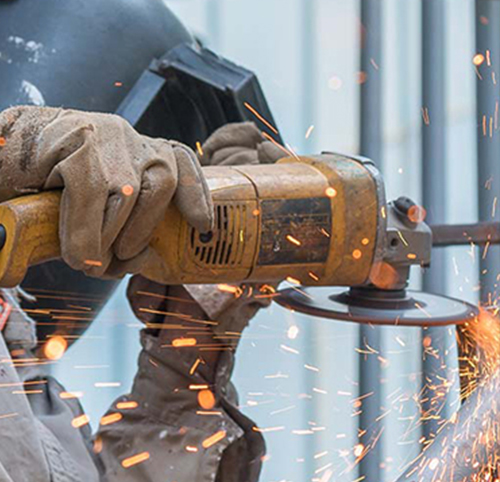Eco-Friendly Manufacturing of Swaged Poles – Is It Possible?

Eco-Friendly Manufacturing of Swaged Poles – Is It Possible?
In an era of growing environmental awareness, industries across the globe are being urged to reconsider traditional manufacturing practices and adopt more sustainable solutions. The production of swaged poles—a critical component in urban infrastructure for lighting, signalling, and utility support—is no exception. As demand for these poles continues to grow, so does the responsibility to ensure their production does not harm the environment. But is the eco-friendly manufacturing of swaged poles truly possible? The answer is a resounding yes when the right strategies, technologies, and materials are embraced.
Why Eco-Friendly Manufacturing is Important?
Traditional manufacturing processes often involve high energy consumption, the generation of industrial waste, and the emission of pollutants. When scaled up for mass production, these practices can significantly impact air quality, water resources, and soil health. Swaged poles, typically made from steel, require substantial resources from extraction to finishing. Therefore, shifting to eco-conscious production is not just a preference—it’s a necessity.
Environmentally sustainable manufacturing helps in:
- Reducing Carbon Footprint: Emissions can be considerably minimised by using cleaner energy sources and efficient machinery.
- Conserving Natural Resources: Recycling and sustainable sourcing reduce the strain on natural resources.
- Minimising Waste: Process optimisation and recycling systems help in waste reduction and better waste management.
- Enhancing Brand Responsibility: Consumers and governments favour manufacturers who align with green practices.
How Eco-Friendly Manufacturing Can Be Achieved?
The transformation toward sustainable production of swaged poles involves a multi-faceted approach:
1. Use of Recyclable and Sustainable Raw Materials
Opting for high-quality recycled steel or sustainably sourced raw materials significantly reduces the environmental impact. Recycled steel maintains the same strength and performance standards, ideal for structural components like swaged poles.
2. Energy-Efficient Processes
Implementing energy-efficient machinery, such as induction heaters and automated forming systems, reduces energy consumption. Using solar or other renewable energy sources within the manufacturing units can also reduce reliance on fossil fuels.
3. Water Conservation and Treatment
Manufacturing processes often involve water cooling and cleaning. Closed-loop water systems and treating used water before discharge can greatly reduce water pollution and consumption.
4. Powder Coating Instead of Traditional Painting
Conventional paints emit volatile organic compounds (VOCs) that harm both the environment and human health. Switching to powder coating offers a more durable finish without harmful solvents, reducing environmental impact.
5. Waste Management and Recycling
Scraps generated during steel cutting or shaping can be collected, reprocessed, and reintegrated into the manufacturing line. A dedicated waste management system helps ensure minimal material is in landfills.
5. Automation and Precision Manufacturing
Using CNC machines and automated forming equipment improves material utilisation and reduces human error, thus minimising waste. These technologies also increase the lifespan and performance of each swaged pole, making replacements less frequent.
6. Compliance with Environmental Standards
Adhering to local and international standards like ISO 14001 helps maintain environmental protocols and builds credibility and trust with stakeholders.
How It Can Be Beneficial?
Adopting eco-friendly practices in swaged pole manufacturing yields several long-term benefits:
- Cost Savings: While initial investments in green technologies may be high, they lead to cost savings over time through reduced energy bills, optimised material use, and lower waste disposal expenses.
- Enhanced Brand Reputation: Companies adopting sustainable practices stand out in the marketplace, gaining favour with environmentally-conscious clients and investors.
- Regulatory Compliance: Governments worldwide are tightening environmental regulations. A proactive approach ensures smoother compliance and avoids penalties.
- Employee Well-being: Safer, cleaner manufacturing environments contribute to better employee health and satisfaction.
- Contribution to Sustainable Infrastructure: Eco-friendly swaged poles can help create sustainable urban landscapes, especially when used in green buildings and smart city projects.
At Pinax Steel, we firmly believe that sustainability is not a choice but our responsibility. Through continuous innovation, we are committed to integrating eco-friendly practices in every step of our swaged pole manufacturing process. From utilising recycled steel and renewable energy to adopting waste-reducing technologies and safer coatings, we are setting new benchmarks for green manufacturing in the infrastructure sector. As we move forward, Pinax Steel pledges to not only meet the demands of modern urban development but to do so in a way that protects the environment for future generations. Eco-friendly manufacturing of swaged poles isn’t just possible—it’s the way ahead, and we’re proud to lead the way.
Additional Reading:

